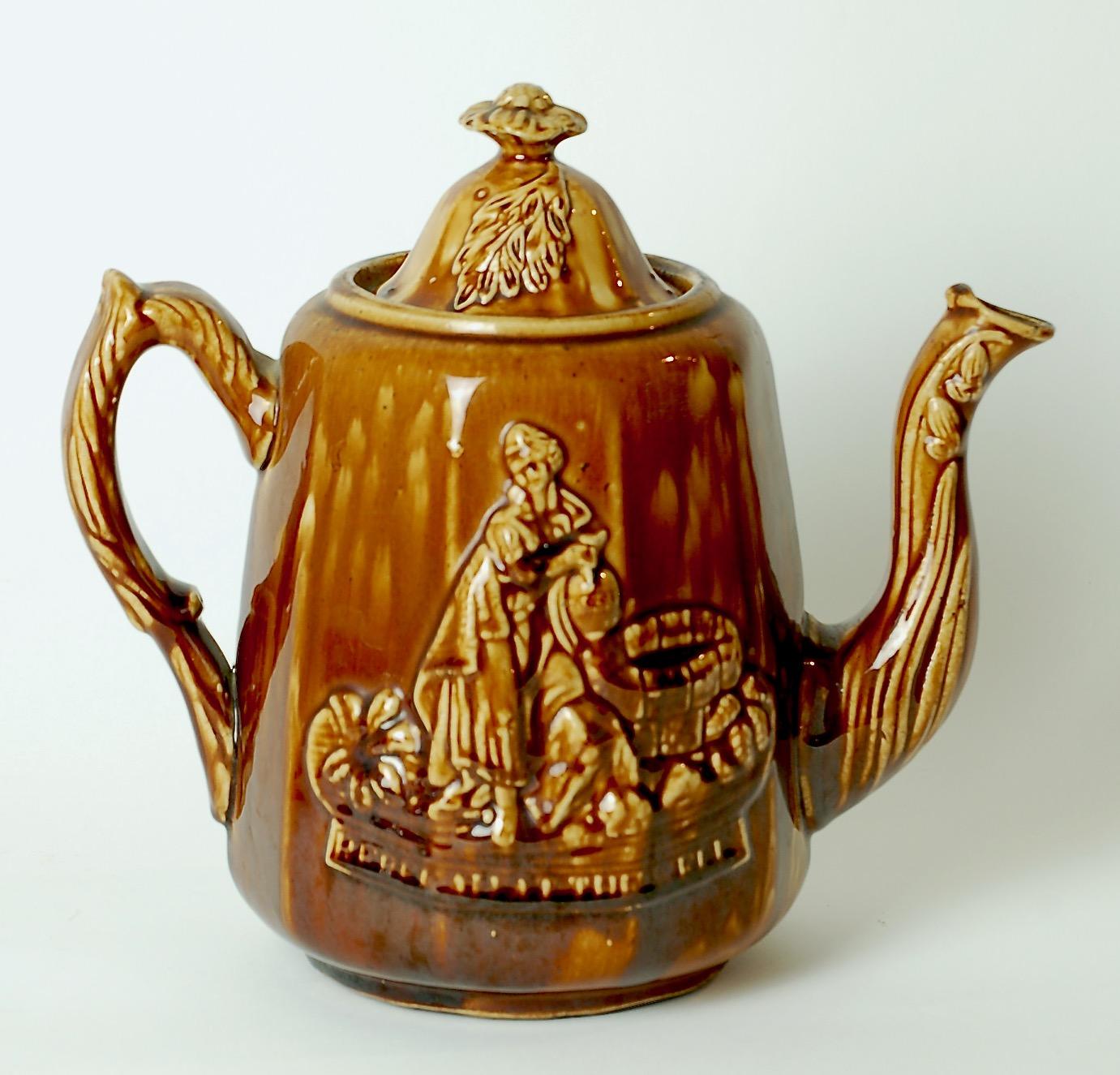Teapot
Northeastern United States
1855-1890
Measurements
9-5/8 in x 10-1/2 in x 6-1/2 in
Materials
Brown-glazed yellow earthenware (Rockingham ware)
Credit Line
Historic Odessa Foundation, anonymous gift
Accession Number
2020.57
Inscription
"REBEKAH AT THE WELL" is in relief on both sides of the body below the image. “S” in relief is on the outside bottom.
Condition Notes
The two molded tabs at the bottom of the lid, designed to hold it in place when the pot is tilted, have been broken off.
Comments
This tall, slip-cast teapot is covered in a mottled brown glaze producing a ceramic known broadly as Rockingham ware, acknowledging the Rockingham Pottery in England where such wares were produced. The antiques marketplace often calls this ware "Bennington pottery," referencing a prominent pottery in that Vermont city, but this kind of pottery was made in great volumes elsewhere--Trenton, Jersey City, Baltimore, Ohio, and Connecticut, to name some.
The well-sculpted teapot bears a three-dimensional image of "Rebekah at the Well," a popular story from the Old Testament that was first used by Edwin Bennett (1818-1908) of Baltimore in 1851 and quickly copied by many potteries throughout the northeastern United States. The Rebekah theme remained very popular for decades thereafter. The shape of the pot and lid incorporates ten facets or sides that blend in with streaks in the glaze.
